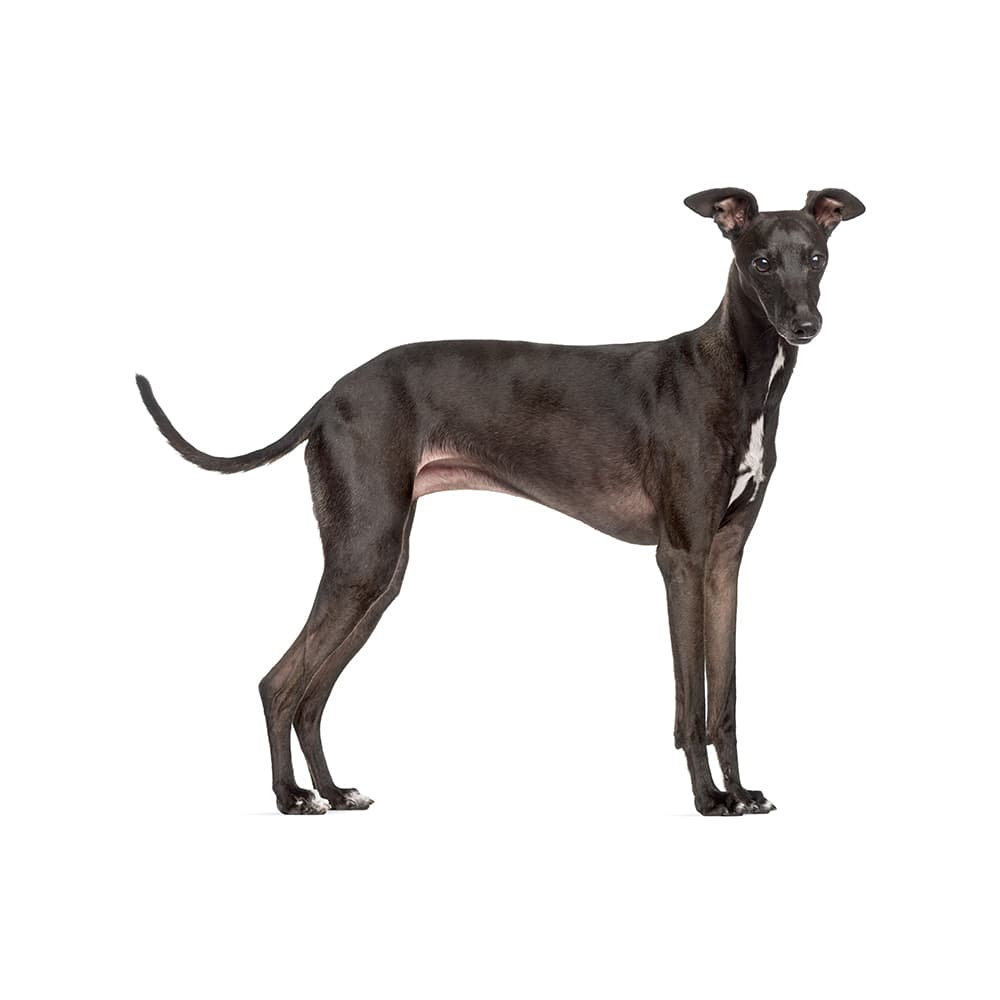Discover your dog's connection to this breed and 200+ others


Discover your dog's connection to this breed and 200+ others



The Italian Greyhound is an ancient breed with origins dating back over 2,000 years. Believed to have been initially bred in the Mediterranean region, it was favored by nobility and depicted in art during the Roman Empire. The breed's elegance and grace made it a popular companion for the aristocracy, and it spread across Europe during the Renaissance. In the 19th century, the Italian Greyhound gained popularity in England and the United States, becoming a cherished pet for many families.
Italian Greyhounds may suffer from amelogenesis imperfecta, brachygnathism, cataracts, color dilution alopecia, corneal dystrophy, cryptorchidism, deafness, demodicosis, epilepsy, hemangioma/hemangiosarcoma, hyperuricosuria, hypothyroidism, Legg-Calve-Perthes disease, leg and tail fractures, lens luxation, patellar luxation, persistent hyaloid artery, persistent pupillary membranes, piebaldism, polydontia, polydontia (retained primary teeth), polyendocrinopathy (immune-mediated), portacaval shunt, prognathism, progressive retinal atrophy (IG-PRA1), vitreous degeneration, and von Willebrand disease. Italian Greyhounds are also sensitive to barbiturate anesthesia.
Italian Greyhounds are affectionate, gentle, and sensitive dogs. They form strong bonds with their families and may be somewhat reserved around strangers. Despite their elegant appearance, they have a playful and energetic nature, enjoying both short bursts of activity and cozy cuddle sessions. Italian Greyhounds can be somewhat timid or anxious, so early socialization and positive reinforcement training are essential to help them develop into well-adjusted companions.
A canine genetic lineage is a group of individuals or entire breeds that descended from common ancestors predating modern breed formation. Often these lineages are associated with a ‘type’ of dog with a unique historical working role and associated behaviors (e.g., herding, scent hunting, etc.).
Sighthound breeds date back thousands of years, they were bred for speed and agility. The physical characteristics of sighthounds include long lean bodies with a deep chest and long legs and allow them to run fast over short distances. Sighthounds are excellent hunters for fast-moving prey while using their sight rather than scent to find and follow their prey. They tend to be independent, but also gentle and affectionate with their families.
Example breeds with ancestry from this lineage include Greyhound, Irish Wolfhound, and Whippet.
The Italian Greyhound's small size and agility make them excellent jumpers. They are sometimes referred to as "miniature gazehounds" due to their similarity in appearance and speed to their larger Greyhound relatives.
This breed is known for its love of warmth and can often be found seeking out the sunniest spots in the house to bask in.
Famous historical figures like Catherine the Great of Russia, Anne of Denmark, and Queen Victoria were all known to have owned Italian Greyhounds.
Doi:10.1002/9781119540687
https://www.ukcdogs.com/italian-greyhound
https://www.akc.org/dog-breeds/italian-greyhound/
https://www.petmd.com/dog/breeds/c_dg_italian_greyhound
Recommended by top vets with decades of experience
21 breeds
64 genetic health markers
50 genetic trait markers
